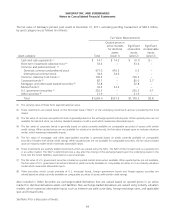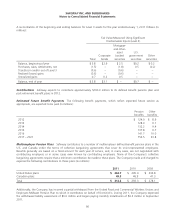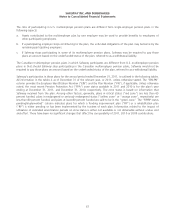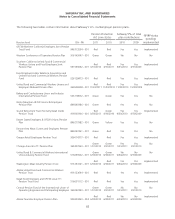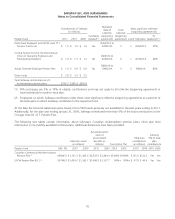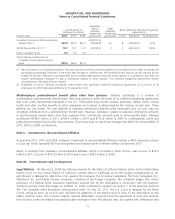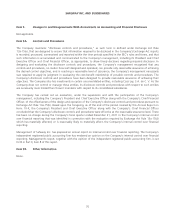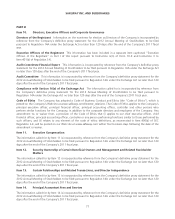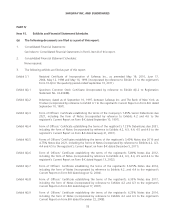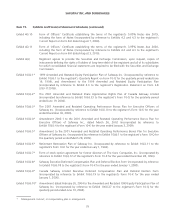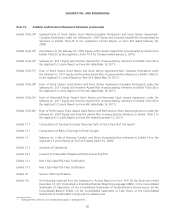Safeway 2011 Annual Report Download - page 90
Download and view the complete annual report
Please find page 90 of the 2011 Safeway annual report below. You can navigate through the pages in the report by either clicking on the pages listed below, or by using the keyword search tool below to find specific information within the annual report.SAFEWAY INC. AND SUBSIDIARIES
Notes to Consolidated Financial Statements
the agreement was not amenable to “summary condemnation” under the antitrust laws under either a “per se” or
“quick look” approach, but instead had to be tested under a “rule of reason” analysis. Because the State previously
agreed not to pursue antitrust liability under a “rule of reason” analysis, the en banc ruling affirmed the district court’s
judgment in favor of defendants on the State’s antitrust claim. The State’s time to file a petition for certiorari to the
United States Supreme Court expired without the State’s filing such a petition, and the matter is over.
The Company is subject from time to time to various claims and lawsuits arising in the ordinary course of business,
including lawsuits involving trade practices, lawsuits alleging violations of state and/or federal wage and hour laws
(including alleged violations of meal and rest period laws and alleged misclassification issues), real estate disputes and
other matters. Some of these suits purport or may be determined to be class actions and/or seek substantial damages.
It is management’s opinion that although the amount of liability with respect to all of the above matters cannot be
ascertained at this time, any resulting liability, including any punitive damages, will not have a material adverse effect on
the Company’s financial statements taken as a whole.
Commitments The Company has commitments under contracts for the purchase of property and equipment and for
the construction of buildings, marketing development funds, the purchase of energy and other purchase obligations.
Portions of such contracts not completed at year end are not reflected in the consolidated financial statements. These
purchase commitments were $571.8 million at year-end 2011.
Note N: Segments
Safeway’s retail business, which represents approximately 98% of consolidated sales and other revenue, operates in the
U.S. and Canada. Safeway is organized into 12 geographic retail operating segments (Chicago, Denver, Eastern, Northern
California, Phoenix, Portland, Seattle, Texas, Vons, Alberta, Vancouver and Winnipeg). Across all 12 retail operating
segments, the Company operates primarily one store format, where each store offers the same general mix of products
with similar pricing to similar categories of customers. Safeway does not operate supercenters, warehouse formats,
combination clothing/grocery stores or discount stores.
These 12 operating segments have been aggregated into one reportable segment because, in the Company’s judgment,
the operating segments have similar historical economic characteristics and are expected to have similar economic
characteristics and similar long-term financial performance in the future. The principal measures and factors we
considered in determining whether the economic characteristics are similar are gross margin percentage, operating profit
margin, sales growth, capital expenditures, competitive risks, operational risks and challenges, retail store sales, costs of
goods sold and employees. In addition, each operating segment has similar products, similar production processes, similar
types of customers, similar methods of distribution and a similar regulatory environment. The Company believes that
disaggregating its operating segments would not provide material additional information.
The difficult economic environment has had a negative impact on all of Safeway’s divisions. Two of these divisions, Vons
and Eastern, had large goodwill balances from purchase transactions which were impaired in 2009. Randall’s and
Dominick’s were also purchase transactions, but the goodwill related to those divisions was fully impaired in previous
years. Consequently, even though the economy has reduced operating results at all of the divisions, the material portion
of the 2009 goodwill impairment was at Vons and Eastern.
72




